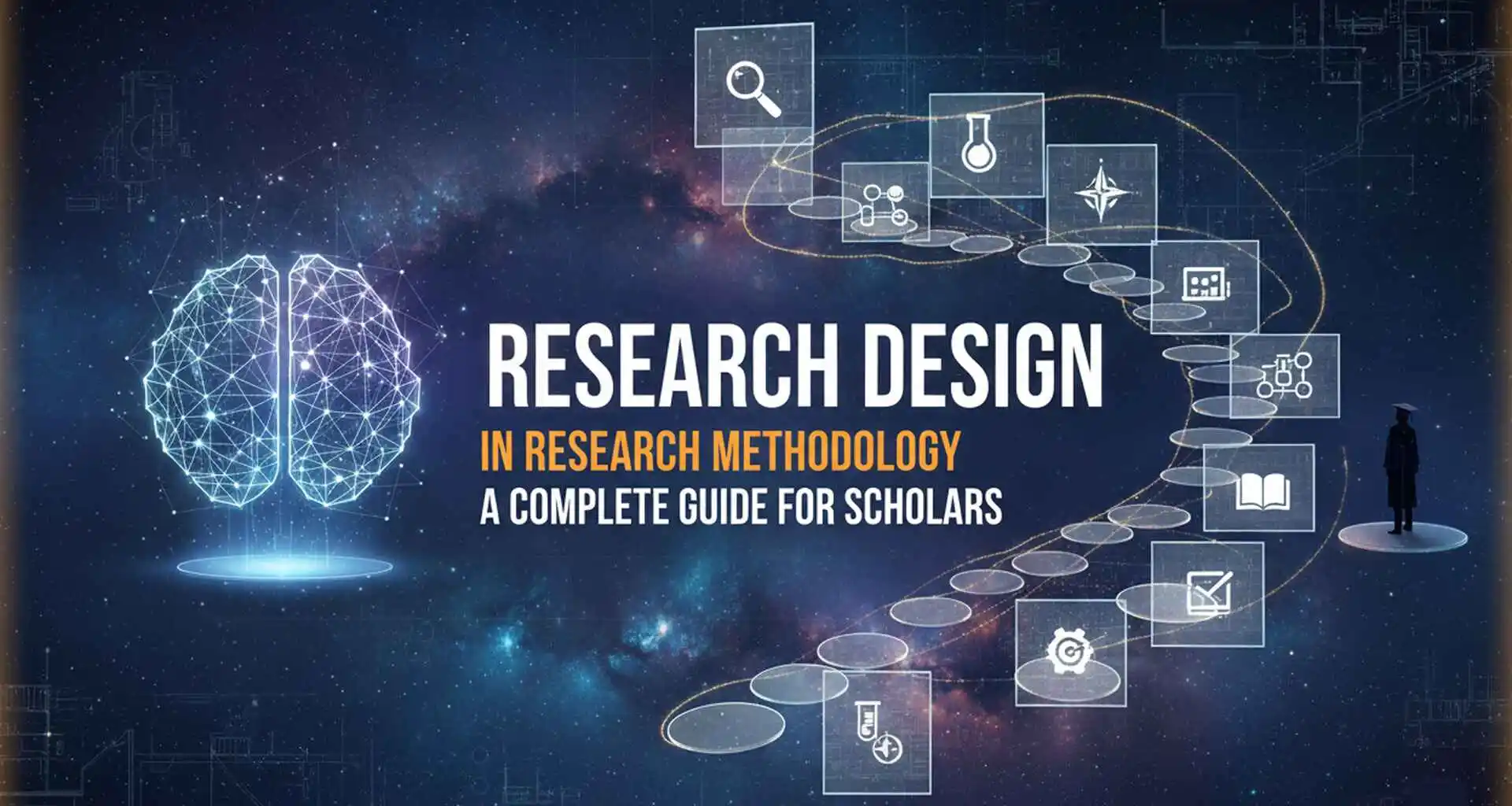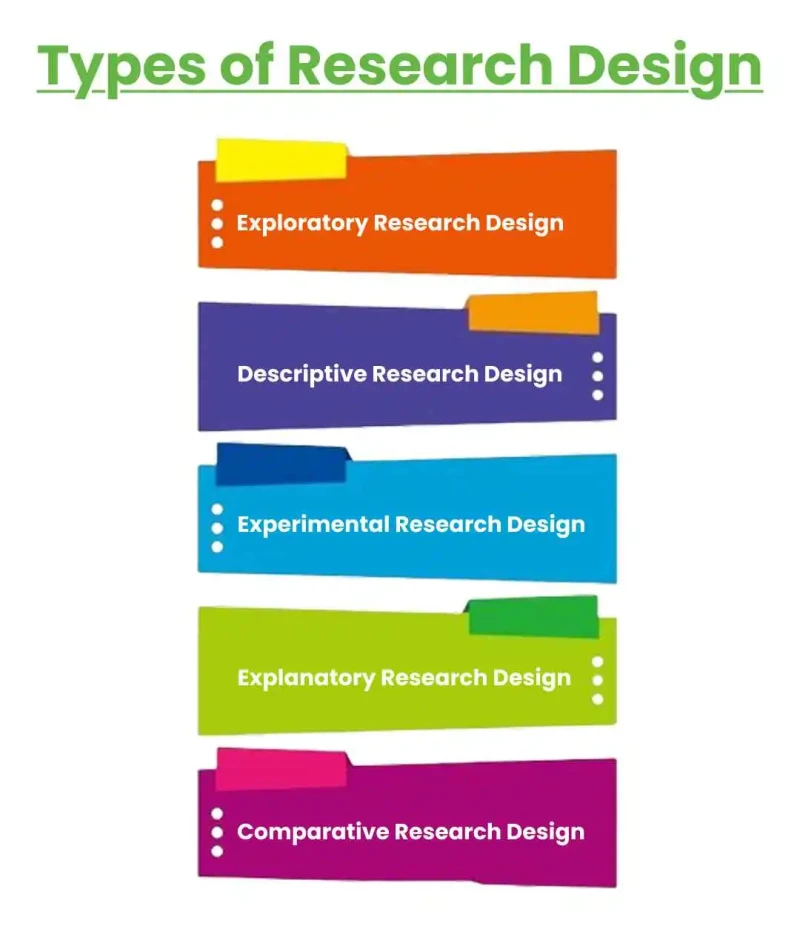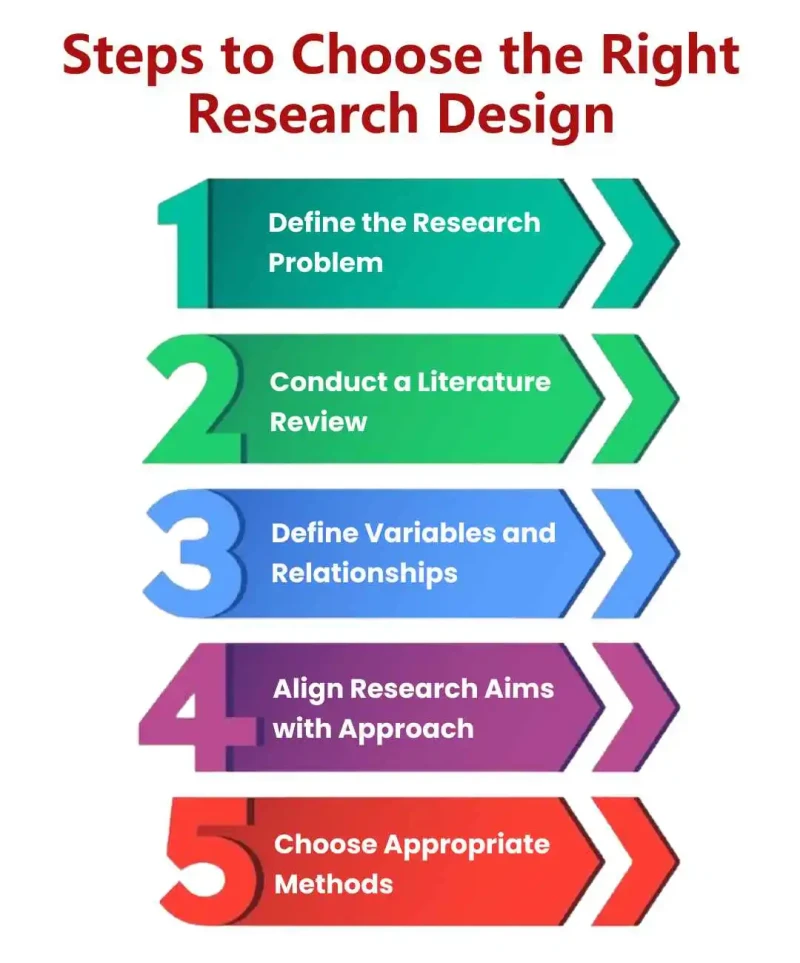
Katy Richards
In the world of academic research, a well-structured research methodology is the cornerstone of credible and impactful studies. Within this framework, research design in research methodology plays a crucial role in determining how a study is conducted, analysed and interpreted.
A clear research design provides direction in helping scholars organise ideas, select suitable methods and ensure that the findings are both valid and reliable. Meanwhile, research design and methods translate that design into practical steps, defining how data will be collected and analysed.
This blog explores everything scholars need to know about research design in research methodology, from its definition and types to its importance, components and best practices. By the end, you will gain clarity on how to craft a strong research design that enhances the overall quality of your study.
Research design in research methodology can be a defined plan which outlines how the research study will collect, measure and analyse data to answer the research question accurately and efficiently. It serves as a roadmap, guiding every stage of the study from hypothesis development to conclusion.
A strong research design ensures that researchers can draw valid conclusions, minimise errors, and produce reliable results. Without it, studies risk becoming disorganised or inconsistent, reducing their impact and credibility.
While closely related, research design and research methods are not the same.
Research Design refers to the overall plan of a study. It addresses questions such as what the study aims to achieve, which data is needed, and how the study will be structured to answer the research question.
Research Methods are specific techniques or procedures used to collect and analyse data. These methods include surveys, interviews, observations, experiments and statistical tests.
A clear research design framework is essential for multiple reasons:
A well-planned design keeps researchers on track, preventing them from straying into irrelevant areas or collecting unnecessary data.
Structured design minimises errors, reduces bias and makes it possible to replicate the study, which is a key matter for scholarly research.
Time, effort and materials are limited in research. A clear design helps manage these resources efficiently and prevents duplication.
A transparent, structured design demonstrates methodological rigour, increasing the study's acceptance in peer-reviewed journals and among academic peers.
A solid design incorporates ethical considerations from the start, protecting participants and ensuring the integrity of data collection and analysis.
In short, every research study benefits from a well-thought-out design. It allows researchers to plan systematically, collect data meaningfully, and derive results that contribute valuable insights to their field.
Research design in research methodology is a structured plan outlining how a study collects, organises, and analyses data. It ensures research is systematic, focused, and capable of producing credible and meaningful results.
Research methodology is the overarching framework that defines how a study is approached. It explains the principles, philosophies, and reasoning behind the research process, providing a foundation for sound and structured inquiry.
Research design in research methodology is the blueprint or structured plan that specifies how the study will be conducted. It organises the steps, procedures, and strategies for collecting and analysing data.
Research methods are the practical tools and techniques used to gather and analyze data according to the research design. They turn the research plan into actionable steps, enabling researchers to generate meaningful and verifiable results.
A research design serves as the foundation and guide for a study, ensuring that each step is carefully aligned with the objectives, methodology, and chosen methods, leading to reliable, reproducible, and meaningful results.
Additionally, a well-structured research design helps anticipate potential challenges, minimizes errors, and streamlines data collection and analysis. It provides clarity for both researchers and readers, enhancing the study’s credibility and overall impact.

Research design structures a study, guiding data collection and analysis. Each type serves a distinct purpose, helping PhD scholars select appropriate approaches for valid, reliable, and meaningful research outcomes. With this foundation, let us explore the most common types of research designs and their practical applications in doctoral research.
An exploratory research design is applied to study under-researched or new research areas. In PhD studies, it assists researchers in determining major variables, formulating hypotheses, and conceptualising research questions, frequently by conducting qualitative methodologies such as interviews, focus groups, or initial literature reviews.
A descriptive research design seeks to give a correct snapshot of a phenomenon or population. PhD students utilise surveys, case studies or observation methods for describing trends, patterns, and characteristics without altering variables. It is best suited for charting current conditions.
Experimental study design probes cause-and-effect hypotheses through the manipulation of independent variables. In doctoral research, researchers can carry out controlled experiments or interventions to study the effects of treatments, programs, or policies, measuring data systematically to ensure reliable results.
Explanatory research design examines the cause of observed things. It is utilised by PhD researchers to determine causal relationships, examine correlations, or elucidate mechanisms behind trends, fusing qualitative and quantitative data to provide insight and theoretical depth.
Comparative design study looks at similarities and differences between groups, settings or time. Doctoral researchers use it to compare policies, cultural practices or institutional outcomes, offering insights that point out patterns and guide theory or practical recommendations.
Selecting the right methodology is essential for any PhD study. It ensures your research aligns with objectives and produces credible, meaningful results. Key factors to consider include your research questions, objectives, available resources, and the overall scope of your project. These help ensure your study is feasible and focused.
A strong methodology shapes how data is collected, analysed, and interpreted, making your research reliable, reproducible, and impactful. Choosing it thoughtfully lays a solid foundation for a successful PhD journey.

Choosing the right research design is critical to obtain credible, meaningful, and useful results. Try following these steps, which PhD researchers and scholars may utilise:
Explicitly define the research problem or issue you wish to address. A well-stated problem statement maintains the study's focus and guides all subsequent decision-making.
Read the literature to find out what is already known, what is unknown, and what the direction of research is in your field. This serves to limit your area of research and feed into possible variables.
Identify the most critical variables for your research and the relationship among them. This knowledge is needed to develop hypotheses, goals, and the design structure in general.
Make sure your research aims are appropriate for the adopted methodology. Whatever the qualitative, quantitative, or mixed-methods approach, aligning objectives to strategy makes the study valid and manageable.
Choosing the right data collection and analysis methods is crucial. Qualitative methods provide a rich understanding, quantitative methods allow for statistical analysis, and mixed methods provide a combination of both to provide robust results.
Choosing the most suitable research methods is a vital part of every student's academic research. The methods you employ determine how you collect, analyse, and interpret data and, in turn, impact the validity and impact of your research.
For PhD students, knowledge of the strengths and applications of different methods ensures that findings are significant and credible.
Qualitative methods focus on exploring experience, perception, and complex phenomena. Common methods are interviews, focus groups, and case studies.
Interviews allow for in-depth talk to reveal participants' insights and individual opinions.
Focus Groups allow two-way discussion to expose collective views and generate rich qualitative data.
Case Studies provide intensive analysis of specific examples, organisations, or events, with practical and theoretical information.
These methods are ideal for exploring new ground, uncovering social or behavioral patterns, and developing theories.
Quantitative methods are focused on data that can be measured and numerical information. They facilitate the research by allowing the detection of trends, comparison of results, and drawing of conclusions through facts instead of subjective opinions.
Surveys are instrumented for the collection of structured replies from populations that assist in clarifying possible patterns or average behaviours.
Experiments are planned to demonstrate the influence of a single variable upon another in a restricted environment.
Statistical analysis is necessary for the understanding of data, testing of hypotheses, and predicting the future on the basis of numerical insights.
Quantitative methods are best suited to research with generalizable results, precise measures, and hypothesis testing.
Both qualitative and quantitative methods are combined in mixed methods to take the best from both.
Researchers might conduct surveys to collect numerical data.
Surveys are followed by interviews to obtain detailed insights from participants’ perspectives.
This approach is of most value in complicated PhD studies where a single method cannot best summarise the research problem.
Mixed methods provide a comprehensive understanding, higher validity, and enable triangulation of findings.
The selection of the research method is strongly connected with the research design. A well-specified design defines which methods are ideally suited, according to research aims, hypotheses, and research area. For example:
An experimental design is likely to rely on quantitative approaches.
An exploratory design can leverage qualitative methods.
Mixed-method designs integrate both approaches for richer, richer understandings.
Thoughtful choice of combination ensures your study is solid in methodology, provides credible findings, and contributes valuable knowledge to your field.
A strong research design ensures your study is structured, systematic, and capable of producing reliable, valid, and meaningful results. Below are the essential components every PhD-level study should consider:
Research objectives and questions define what the study aims to achieve. They provide focus, guide methodological choices, and help researchers stay aligned with the purpose of the study throughout the research process.
Hypotheses or propositions are testable statements that predict the relationship between variables. They provide direction, focus analysis, and help determine whether findings support or challenge existing knowledge.
A sampling strategy outlines how participants, cases or data points are selected. It ensures representativeness, reduces bias and allows researchers to make valid inferences from the data collected.
The data collection plan specifies what data will be gathered, how and from whom. It ensures consistency, reliability, and that the data aligns with the research objectives and design.
The data analysis approach defines how collected data will be processed, examined and interpreted. It ensures findings are meaningful, supports hypothesis testing, and aligns with the overall research framework.
Even experienced researchers will trip up from time to time when designing their studies. Identifying these frequent mistakes early can ensure that research stays on target, is credible, and yields results that actually matter.
One common mistake is blurring the line between research design, an overall plan for a study, and research methods, the actual tools used to gather and analyse data. Blurring this distinction can result in vague aims and variable results.
Selecting an inappropriate research design that does not align with the goals of a study, its research questions, or hypotheses can produce irrelevant results, divert valuable resources, and complicate the interpretation of results unnecessarily.
Neglecting the quality of a study can greatly undermine its validity. The most common errors are:
Validity Problems: The measurements or data could not reflect what the study aims to explore.
Reliability Problems: Unreliable collection or analysis procedures decrease results' trustworthiness.
Sample Size Issues: A small number of participants or an unrepresentative sample lowers the study's generalizability.
By focusing on these areas in the early stages of their work, researchers can solidify their research design, generate more valid results, and contribute meaningfully to their discipline.
Citation managers such as Zotero, Mendeley, and EndNote assist researchers in arranging references, producing correct bibliographies, and organising literature reviews, conserving time and guaranteeing correct citation formatting for scholarly precision.
Data analysis software like SPSS, R, NVivo, or Python aid in processing, analysing, and visualising research data. They increase precision, allow detailed statistical operations, and facilitate reproducible, high-quality output.
Templates and blueprints offer systematic guides to designing research studies. They assist in harmonising goals, approach, sampling, data gathering, and analysis phases, promoting consistency and congruity in the research process.
Internet sources, tutorials, and methodology guides provide hands-on advice on research design, data gathering, and analysis. They assist scholars in fine-tuning study plans, sidestepping potential pitfalls, and enhancing overall study quality.
A good research design is the fulcrum of every successful academic research. It sheds light by outlining purposes, variables, and procedures to ensure that each step is in line with the research aim. This framework adds credibility, with results being reliable and replicable, which is important for high-quality research publications.
Additionally, a good research design has a significant effect on theses, dissertations, and other research products. Through meticulous planning of data collection, analysis, and interpretation, researchers on writing thesis, present their solid findings and make their valuable contributions to their discipline.
For most PhD students, conducting a research project can seem daunting. That's where research design is your guide, leading every step of the way. A well-defined and well-planned design simplifies your use of time, resources, and tools, as well as making your results more credible and reliable.
Having the correct research design makes the difference between a study that fails and one that yields publishable findings. If you want to master research design, getting professional guidance can help you anticipate potential difficulties, make smart methodological choices, and present your work confidently.
To sum up, research design is an integral part of research methodology. It gives structure, helps to improve the synergy between design and methods, and facilitates scholarly work being credible and significant.
The last lesson is easy to remember: A well-designed research design is the key to successful scholarly research. Researchers who wish to brush up on their methodology can greatly benefit from professional guidance to maximise study planning, methodology, and execution so that their research has maximum impact.